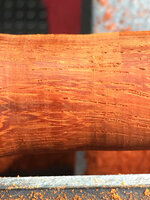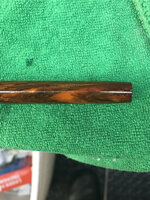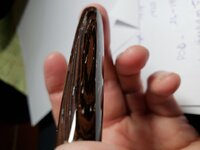@1080wayne- Thanks. I did after reading your reply and found a lot of information. Still trying to sift through the wealth of knowledge available and figuring out how to navigate the site.
@wouldentu2?- Do you mean to apply CA before initial sanding?
Earl- It's padauk (I think). Been to a few women's UGA games with some guys I play Pickleball with. It would be nice if Brian Kelley can get the football team to play all the way through the end of the season and not put it in cruise control the last few weeks.
Tony- I did use DNA but not compressed air (but after reading some other threads, I will be using that going forward). I haven't been making pens (or even turning) too long, but I have noticed that the length of time I let the coats dry is related to taking my ADD medicine. I will try a timer to get more consistent.
Ted- How long do you let it dry after wiping down with acetone or DNA? I have been sanding through 600. Is this a step that I can eliminate?
Thanks to all for your replies and advice. I ended up taking it back down to bare wood (good skew practice and I don't always have a "light" touch) and will try it again.
Sent from my iPad using
Penturners.org mobile app





